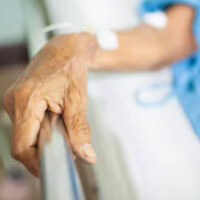Bedsores and Negligence in SoCal Nursing Homes

Pressure ulcers may be the most preventable and most serious nursing home neglect injuries. Simple precautions, like frequently turning residents in their beds, could all but eliminate the risk of bedsores. These open wounds are often life-threatening, partially because the open wound allows bacteria to enter the body, and partially because these wounds have extremely high infection rates.
Legally, bedsore injury matters may be the most complex nursing home neglect cases that a Carlsbad personal injury lawyer handles. These matters often turn on meticulous and seemingly irrelevant details, like nighttime staffing levels. Furthermore, out-of-state conglomerates often legally own area long-term care facilities. Only the best Carlsbad personal injury lawyer pays close attention to small details and assertively stands up for victims’ rights.
What is Negligence?
Basically, negligence is a lack of care. The overall legal principle is based on a moral principle that many children learn in Sunday School. The Good Samaritan went out of his way to help an injured traveler. Likewise, nursing homes must go out of their way to prevent bedsores and other injuries.
The Good Samaritan moral principle is somewhat vague. But the negligence legal principle is not vague at all. Negligence in a nursing home neglect case usually comes down to:
- The Standard of Care: Quite simply, the standard of care dictates how far nursing home owners must go to prevent injury. As mentioned, the standard of care in bedsore matters is turning the resident every two hours. It’d be nice if the staff turned residents more often, but more frequent turning is not the standard of care.
- Violation of the Standard of Care: Usually, a Carlsbad personal injury lawyer partners with a doctor or other professional who details the violation of the standard of care and, more importantly, connects that violation with the victim’s injury.
If negligence causes injury, a Carlsbad personal injury lawyer can obtain compensation for economic losses, such as medical bills, and noneconomic losses, such as pain and suffering.
A pre-existing condition often contributes to the risk and/or severity of an injury. That pre-existing condition might or might not be related to overall nursing home negligence.
Malnutrition, a problem at many long-term care facilities, sometimes affects bedsores. Many older residents don’t eat because they don’t feel hungry or the food doesn’t look, smell, or taste good. Weak bodies are less able to ward off infection-related injuries, such as bedsores.
The pre-existing condition might have nothing to do with nursing home negligence. For example, if Adam has a history of bedsores, any subsequent injuries will probably be much more severe.
Resolving a Negligence Case
Most nursing home negligence cases settle out of court, and most of these settlements occur during mediation, a court-supervised negotiation session.
That court supervision element is key. During mediation, both sides must negotiate in good faith. A “take it or leave it” offer is not a good-faith offer. Instead, both sides must compromise and earnestly try to settle the case out of court.
Largely because of the good faith negotiation duty, civil mediation is about 90 percent successful in California.
Count on a Hard-Working San Diego County Lawyer
Injury victims are entitled to substantial compensation. For a confidential consultation with an experienced personal injury lawyer in Carlsbad, contact the Pursley Law Firm. Virtual, home, and hospital visits are available.
Source:
medlineplus.gov/ency/patientinstructions/000426.htm

